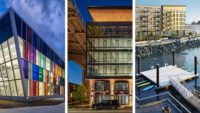
The California High-Speed Rail Authority released bid results from five teams seeking to design and build the first section of the state’s high-speed rail line between Madera and Fresno. Proposals submitted in January for the approximately 28-mile segment were scored 70% on price and 30% on technical merit, with the team of Sylmar, Calif.-based Tutor Perini Corp., San Antonio-based Zachry Construction Corp. and Parsons Corp., Pasadena, Calif. coming out on top, primarily due to its low bid of $985.14 million.
“We are very excited about it,” says Ronald Tutor, president and CEO of Tutor Perini, which led the team. “It was very important to us as a California-based contractor.”
The authority had estimated the cost for the design-build contract to come in between $1.2 billion and $1.8 billion. “We were low bidder and that was the price we wanted,” Tutor says. “At this stage in our career, if we don’t know what our costs are, shame on us.”
The only other team to bid below the estimate was led by Spanish firm Dragados, along with Long Beach, Calif.-based Samsung C&T America and Pulice Construction, Phoenix, at just under $1.09 billion.
The winning bid team was ranked at the bottom for technical merit, based on such factors as schedule capability, project approach and safety. Tutor says he was "taken aback" at how low the three U.S.-led teams scored in technical merit compared to the two teams led by Spanish-based firms.
The other three teams included California High-Speed Rail Partners, comprising Irving, Texas-based Fluor Corp., New York City-based Skanska USA, PCL Constructors, Canada, and HDR Engineering, Omaha, Neb., with a bid of $1.26 billion; California Backbone Builders, consisting of Spanish firms Ferrovial and Acciona Infrastructure, which submitted a bid of $1.37 billion; and California High-Speed Ventures, made up of Kiewit Corp., Omaha, Granite Construction, Watsonville, Calif., and Spanish company COMSA EMTE, bidding $1.54 billion. California Backbone Builders was rated highest in technical merit of all the teams.
The formal award-of-contract is expected in June, with notice-to-proceed to come shortly after. “It’s time to get to work in the Central Valley and create thousands of jobs,” says Jeff Morales, the High-Speed Rail Authority’s CEO. A myriad of contentious land purchases and court challenges from opponents of the project to connect Los Angeles and San Francisco by high-speed rail could impede this forward momentum, however.
Once construction begins, challenges will include managing the lengthy construction zone and weaving together multiple construction elements, from bridges to embankments to various highway interfaces, Tutor says.



Post a comment to this article
Report Abusive Comment